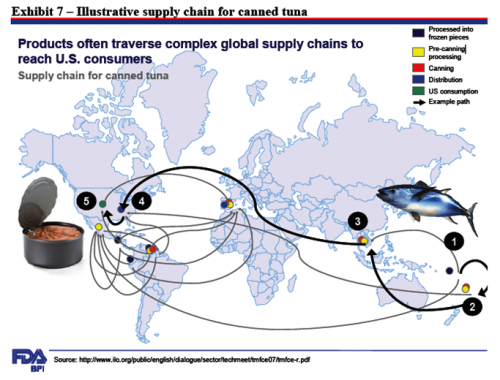Q. What’s with the turkey recall? A. Same old, same old
I’ve been rounding up information about the Cargill recall of ground turkey contaminated with Salmonella Heidelberg. William Neuman at the New York Times related the story on August 3. Same old same old.
Cargill is a huge company with, as Bill Marler counts them, a long history of food safety problems. Did Cargill not bother to test for pathogens? As I explain in my book Safe Food: The Politics of Food Safety, no meat company wants to test for pathogens. If they found pathogens, they would have to recall the products.
And where was the USDA in all of this? Best not to ask.
The USDA was testing. The testing found Salmonella. The USDA did nothing.
According to the Wall Street Journal,
Federal officials said they turned up a dangerous form of salmonella at a Cargill Inc. turkey plant last year, and then four times this year at stores selling the Cargill turkey, but didn’t move for a recall until an outbreak killed one person and sickened 77 others.
How come?
Food-safety specialists said the delay reflected a gap in federal rules that don’t treat salmonella as a poisonous contaminant, even if inspectors find antibiotic-resistant forms such as the Heidelberg strain implicated in the latest outbreak.
But CDC investigations show that turkey-related illnesses have been reported for months. Despite the reports, the USDA took its own sweet time insisting on a recall.
The rationale for the delay is—get this—the USDA believes it does not have the authority to order recalls for any contaminant except E. coli O157:H7. It has no authority to recall meat contaminated with Salmonella or other toxic forms of E. coli.
Or at least that’s how USDA interprets the legal situation (for the history of all this, see Bill Marler’s summary.
One reason for the USDA’s foot-dragging must surely be pressure from the meat industry which wants as little testing as possible and preferably none. The meat industry would rather leave it up to you to cook your food safely.
According to a report by Elizabeth Weise in USA Today,
The reasons these bugs aren’t currently regulated are a mix of politics, money and plain biology — the bacteria are constantly evolving and turning up in new and nastier forms, making writing rules about them a bit of a nightmare. For example, the German E. coli variant that sickened more than 4,075 in Europe and killed 50…wasn’t known before this spring.
The meat industry takes advantage of this situation and argues:
“We don’t have a true baseline determining the prevalence of these organisms in the beef supply,” says Betsy Booren of the American Meat Institute (AMI) Foundation, the research arm of AMI. Without knowing how common they are, it’s impossible to say whether they should be considered adulterants, she says.
What they seem to be saying is that meat always has bacteria on it. And just because these particular bacteria can kill people doesn’t mean the industry is responsible if anyone gets sick. But shouldn’t the industry be doing a better job?
In Food Safety News, Michele Simon has a terrific analysis of the safety loopholes that allow this absurd situation to continue:
How did the meat industry get so powerful that it can keep USDA from doing its job? Now, instead of preventing illnesses from occurring by requiring testing with teeth, we have USDA regulations that are so lax they allow almost half the samples tested at ground turkey plants to be contaminated with Salmonella — a pretty easy standard to meet. And one that allowed this outbreak to occur.
I keep asking: how much worse does it have to get before Congress does something about ensuring safe food. Cargill’s inability to protect the public from unsafe meat is reason alone to create a single food safety system that unites the functions of USDA and FDA.
If Congress isn’t ready to take that step, it could at least give USDA the power to act and the FDA the funding it needs to do its job.




